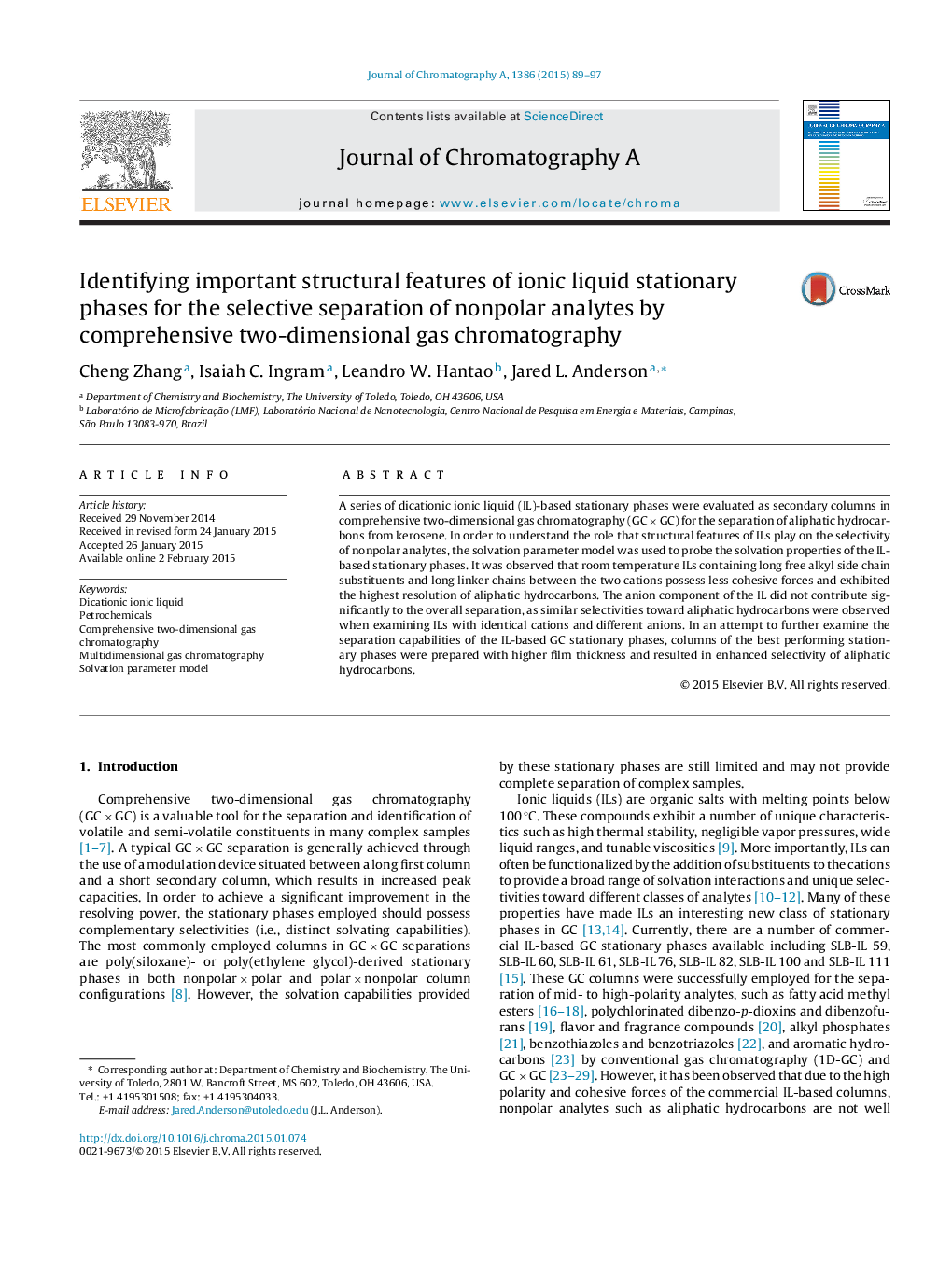| Article ID | Journal | Published Year | Pages | File Type |
|---|---|---|---|---|
| 1202042 | Journal of Chromatography A | 2015 | 9 Pages |
•Twelve ILs were examined as 2D stationary phases for separation of nonpolar analytes.•The solvation parameter model was employed to guide structural tuning of the ILs.•High selectivity resulted from long alkyl side chain substituents within the ILs.•Long linker chains between the IL cations improved 2D chromatographic selectivity.•Optimal resolution was obtained on select IL columns with 0.28 μm film thickness.
A series of dicationic ionic liquid (IL)-based stationary phases were evaluated as secondary columns in comprehensive two-dimensional gas chromatography (GC × GC) for the separation of aliphatic hydrocarbons from kerosene. In order to understand the role that structural features of ILs play on the selectivity of nonpolar analytes, the solvation parameter model was used to probe the solvation properties of the IL-based stationary phases. It was observed that room temperature ILs containing long free alkyl side chain substituents and long linker chains between the two cations possess less cohesive forces and exhibited the highest resolution of aliphatic hydrocarbons. The anion component of the IL did not contribute significantly to the overall separation, as similar selectivities toward aliphatic hydrocarbons were observed when examining ILs with identical cations and different anions. In an attempt to further examine the separation capabilities of the IL-based GC stationary phases, columns of the best performing stationary phases were prepared with higher film thickness and resulted in enhanced selectivity of aliphatic hydrocarbons.
